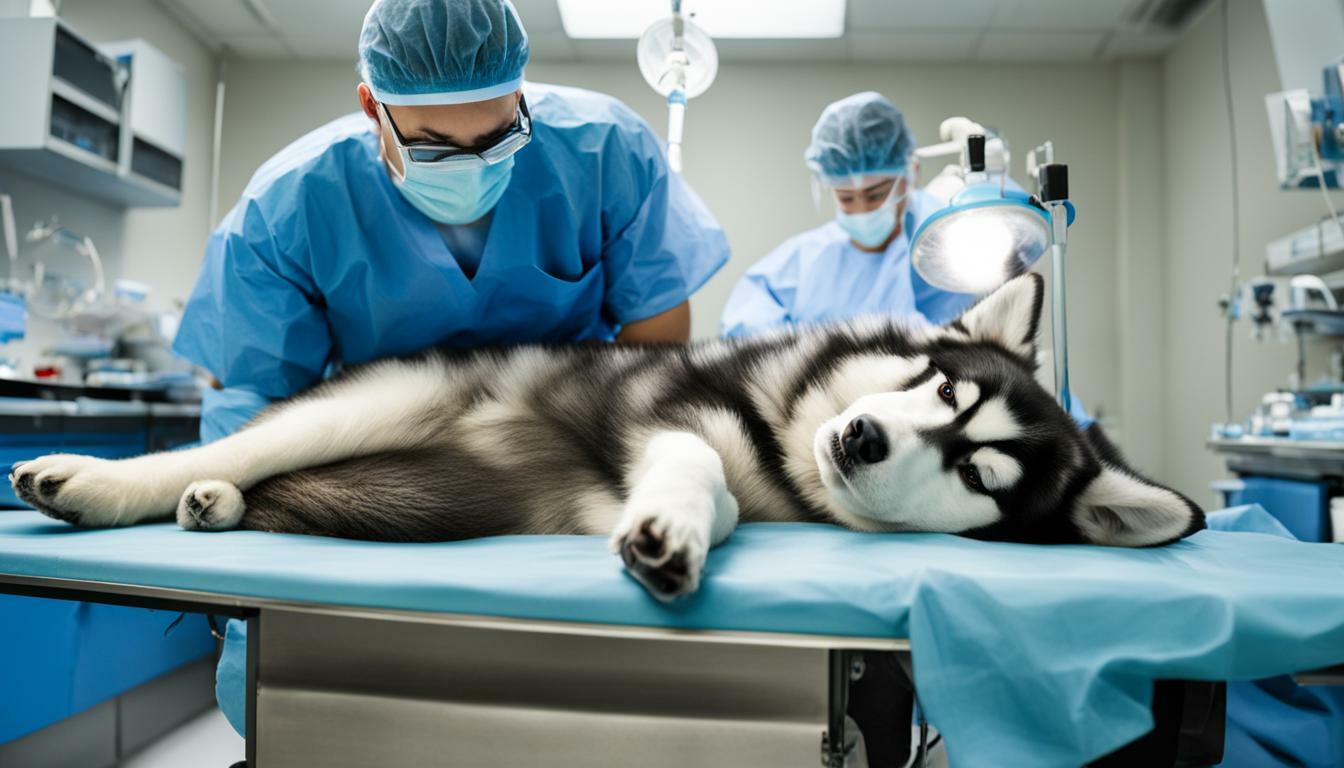Neutering an Alaskan Malamute is an important aspect of responsible pet ownership, but knowing when to have the procedure done is crucial for their health and wellbeing.
Neutering an Alaskan Malamute should generally take place between the ages of six months and two years old. Neutering involves the removal of the ovaries, fallopian tubes, and womb in female Malamutes and the removal of the testicles in male Malamutes. Spaying is a more complex procedure than castration, but both surgeries are safe and common. Neutering provides several benefits, including preventing overpopulation, reducing the risk of certain cancers, and eliminating the risk of pregnancy and associated health issues. However, there is conflicting research regarding the optimal timing for neutering, with some suggesting waiting until after the dog has reached puberty. Ultimately, the decision should be made in consultation with a veterinarian. The only reason not to neuter an Alaskan Malamute is if it belongs to a trusted and accredited breeder for the purpose of maintaining the breed standard.
Understanding the Neutering Process for Alaskan Malamutes
Neutering, which refers to the removal of the reproductive organs, is a common surgical procedure performed on Alaskan Malamutes to prevent unwanted breeding and promote their overall health. This procedure is essential for responsible pet ownership and population control. Neutering can be performed on both male and female Alaskan Malamutes, although the specific surgeries involved differ slightly.
In female Alaskan Malamutes, the procedure is known as spaying, and it involves the removal of the ovaries, fallopian tubes, and womb. This is a more complex surgery compared to castration, which is the procedure performed on males. Castration involves the removal of the testicles in male Alaskan Malamutes. Both surgeries are safe and commonly performed by qualified veterinarians.
Neutering provides several benefits for Alaskan Malamutes. Firstly, it helps prevent overpopulation by eliminating the risk of unwanted pregnancies. This is especially important considering the large size and strength of Alaskan Malamutes. Moreover, neutering reduces the risk of certain cancers, such as mammary and testicular cancer. It can also prevent the occurrence of pregnancy-related health issues, such as uterine infections and complications during childbirth.
However, there is conflicting research regarding the optimal timing for neutering Alaskan Malamutes. Some studies suggest waiting until the dog has reached puberty or even later, as this may have a positive impact on their overall health and development. The decision on when to neuter your Alaskan Malamute should be made in consultation with a veterinarian who can provide personalized advice based on your dog’s specific needs and circumstances.
| Benefits of Neutering Alaskan Malamutes | Risks of Not Neutering Alaskan Malamutes |
|---|---|
| Prevents overpopulation | Behavioral issues |
| Reduces the risk of certain cancers | Increased health risks |
| Eliminates the risk of pregnancy-related health issues | Unwanted pregnancies. |
Risk of Not Neutering Your Alaskan Malamute
“Not neutering your Alaskan Malamute can lead to a variety of behavioral issues, including aggression, roaming, and marking territory. Additionally, intact male Alaskan Malamutes may display more dominant and territorial behavior, making them more likely to engage in fights with other dogs. Female Alaskan Malamutes in heat can attract unwanted attention from male dogs, increasing the risk of accidental pregnancies. Moreover, unneutered Alaskan Malamutes have a higher chance of developing certain health issues, such as prostate problems in males and uterine infections in females.”
It is important to note that there is only one situation in which it is acceptable not to neuter an Alaskan Malamute. Trusted and accredited breeders may choose not to neuter their dogs for the purpose of maintaining the breed standard. However, this exception is only applicable to a small fraction of Alaskan Malamutes and should not be confused with the general recommendation for responsible pet owners to neuter their dogs.
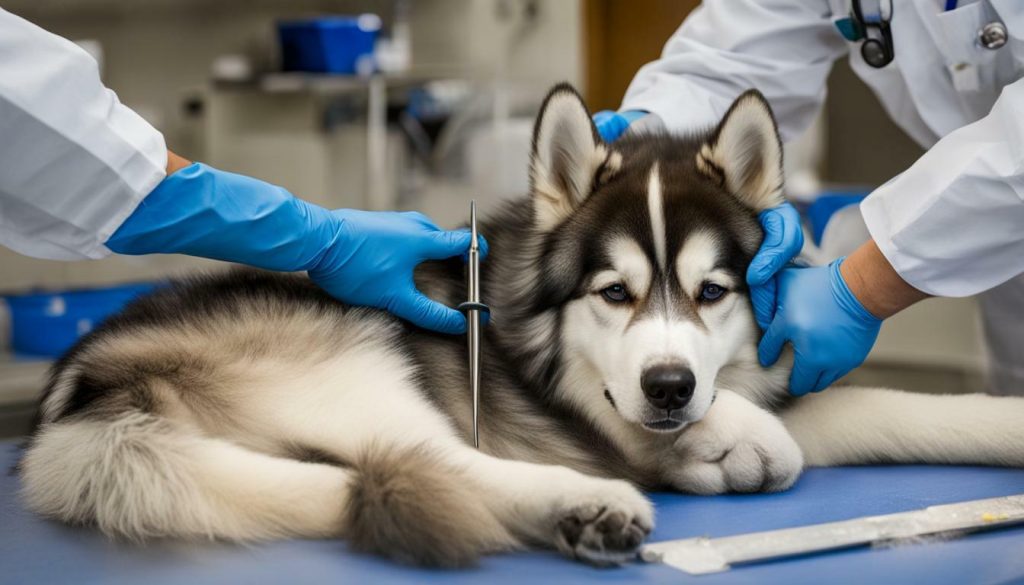
Understanding the neutering process for Alaskan Malamutes is crucial for every dog owner. It is a safe and effective procedure that helps prevent overpopulation, reduces the risk of certain cancers, and eliminates the risk of pregnancy-related health issues. However, the optimal timing for neutering can vary, and it is best to consult with a veterinarian to make an informed decision for your Alaskan Malamute’s individual needs. Remember, responsible pet ownership includes considering the welfare of your furry friend and the overall impact on the dog population.
The Ideal Age for Neutering Alaskan Malamutes
The ideal age for neutering an Alaskan Malamute typically falls between six months and two years old, providing numerous advantages for their overall health and behavior. Neutering is a surgical procedure that involves the removal of the ovaries, fallopian tubes, and womb in female Malamutes, and the removal of the testicles in male Malamutes. While spaying is a more complex procedure than castration, both surgeries are safe and common, with minimal risks involved.
Neutering your Alaskan Malamute at the recommended age range offers several benefits. One of the main advantages is preventing overpopulation, as it eliminates the possibility of unwanted litters. By reducing the number of free-roaming dogs, we can contribute to controlling the population and easing the burden on animal shelters. Furthermore, neutering has been shown to decrease the risk of certain cancers in both female and male Alaskan Malamutes. This includes uterine, ovarian, and testicular cancers, which can be life-threatening conditions.
Another significant benefit of neutering is eliminating the risk of pregnancy-related health issues in female Alaskan Malamutes. Unplanned pregnancies can lead to complications such as pyometra (infection of the uterus), which can be a serious and potentially fatal condition. Neutering not only prevents unwanted litters but also safeguards the overall health and well-being of your beloved Malamute.
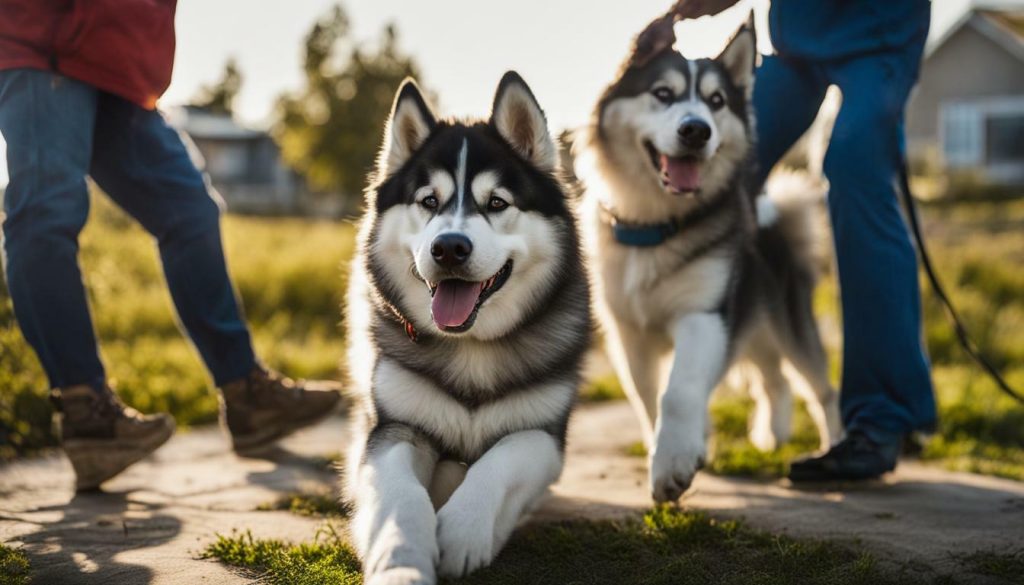
| Benefits of Neutering Alaskan Malamutes |
|---|
| Prevents overpopulation |
| Reduces the risk of certain cancers |
| Eliminates the risk of pregnancy and associated health issues |
However, it is essential to mention that there is conflicting research regarding the optimal timing for neutering Alaskan Malamutes. Some studies suggest waiting until the dog has reached puberty before considering the procedure. It is crucial to consult with a veterinarian who can evaluate your individual Malamute’s health, behavior, and specific needs to determine the best timing for neutering.
It’s important to note that the only reason not to neuter an Alaskan Malamute is if they belong to a trusted and accredited breeder and are being used for the purpose of maintaining the breed standard. In such cases, responsible breeders carefully select dogs with desirable traits and qualities to preserve the integrity of the breed. However, for most pet owners, neutering their Alaskan Malamute within the recommended age range can provide numerous health benefits and contribute to responsible pet ownership.
Benefits of Neutering Alaskan Malamutes
Neutering your Alaskan Malamute offers several advantages, not only for your pet’s individual health and wellbeing but also for the larger canine population. The procedure, which involves the removal of the ovaries, fallopian tubes, and womb in females, and the removal of the testicles in males, provides numerous benefits that can greatly improve the quality of life for your furry companion.
One of the primary benefits of neutering Alaskan Malamutes is the prevention of overpopulation. By spaying or castrating your dog, you are helping to control the number of unwanted puppies that end up in shelters or on the streets. This responsible decision contributes to reducing the strain on animal welfare organizations and ensures that every dog has the chance to find a loving home.
Another significant advantage is the decreased risk of certain cancers. Female Malamutes that are spayed have a reduced risk of developing mammary tumors and uterine infections, while male Malamutes that are neutered have a lower chance of developing testicular cancer. Additionally, neutering eliminates the risk of pregnancy and associated health issues, such as complications during delivery or the development of uterine infections.
Malamute Mates
Neutering Alaskan Malamutes is an essential step in responsible pet ownership. By taking this proactive approach, you are not only looking out for the health and well-being of your own dog, but you are also making a positive impact on the larger canine community.
It’s important to note, however, that there is conflicting research regarding the optimal timing for neutering. While some studies suggest waiting until after the dog has reached puberty, others advocate for early neutering. Ultimately, the decision should be made in consultation with a veterinarian who can provide personalized advice based on your pet’s specific circumstances.
It’s worth mentioning that there is one exception to the recommendation of neutering Alaskan Malamutes. Trusted and accredited breeders may choose not to neuter their dogs to maintain the breed standard. In these cases, responsible breeding practices are followed to ensure the health and integrity of the Malamute breed.
By considering the benefits of neutering and consulting with a veterinarian, you can make an informed decision that prioritizes the health and well-being of your Alaskan Malamute. Remember, each dog is unique, so it’s essential to tailor your choices to the specific needs of your beloved furry friend.
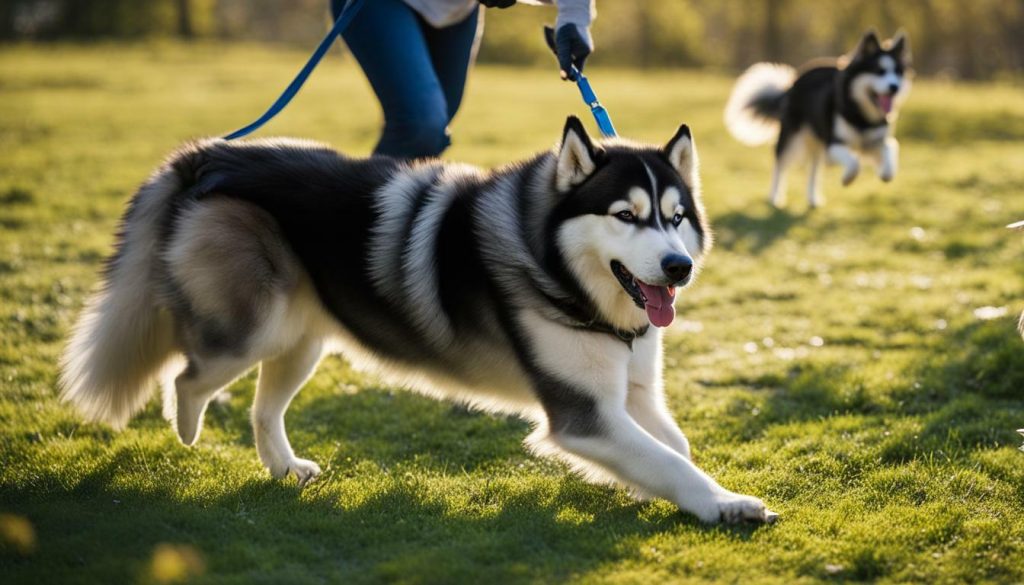
Failing to neuter your Alaskan Malamute can pose serious risks to their health, behavior, and overall quality of life. Unneutered Alaskan Malamutes are more prone to certain health issues, including testicular cancer in males and uterine infections and mammary tumors in females. By opting not to neuter, you increase the likelihood of these potentially life-threatening conditions developing.
In addition to the health risks, intact Alaskan Malamutes may exhibit undesirable behavioral changes. Males that are not neutered are more likely to display aggressive, territorial, and dominant behaviors, which can lead to conflicts with other dogs and pose potential dangers to their owners or family members. Unspayed females, on the other hand, may experience intense hormonal fluctuations, leading to anxiety, restlessness, and excessive vocalization.
Failure to neuter your Alaskan Malamute also carries the risk of unwanted pregnancies. Accidental breeding can result in litters of puppies that are difficult to care for and find suitable homes for. Overpopulation in dog shelters and rescues remains a critical issue, and by not neutering your Malamute, you contribute to this problem. Furthermore, pregnant and nursing females may experience health complications, such as eclampsia and dystocia, which can put their lives at risk.
| Risks of Not Neutering an Alaskan Malamute: |
|---|
| Increased risk of testicular cancer in males |
| Higher chance of uterine infections and mammary tumors in females |
| Potential aggressive and dominant behaviors in males |
| Hormonal fluctuations leading to anxiety and restlessness in females |
| Risk of accidental pregnancies and contributing to overpopulation |
| Potential health complications for pregnant and nursing females |
“Not neutering your Alaskan Malamute can have serious consequences. It’s important to consider the long-term health and well-being of your pet when making this decision. By choosing to neuter, you can help prevent potential health issues, unwanted behaviors, and the risks associated with unplanned pregnancies. Consult with a veterinarian to determine the best timing and approach for your Alaskan Malamute’s neutering.”
Post-Neutering Care for Alaskan Malamutes
After the neutering procedure, proper care and attentive post-operative measures are crucial to facilitate your Alaskan Malamute’s healing process. Neutering an Alaskan Malamute should generally take place between the ages of six months and two years old. Neutering involves the removal of the ovaries, fallopian tubes, and womb in female Malamutes and the removal of the testicles in male Malamutes. Spaying is a more complex procedure than castration, but both surgeries are safe and common.
Neutering provides several benefits, including preventing overpopulation, reducing the risk of certain cancers, and eliminating the risk of pregnancy and associated health issues. However, there is conflicting research regarding the optimal timing for neutering, with some suggesting waiting until after the dog has reached puberty. Ultimately, the decision should be made in consultation with a veterinarian.
Proper post-neutering care is essential to ensure your Alaskan Malamute’s speedy recovery. Keep your dog comfortable by providing a designated space for rest and relaxation. Monitor the incision site for any signs of infection or abnormal swelling, and follow all your veterinarian’s instructions regarding pain management and medication administration. Additionally, it’s important to prevent your Malamute from excessive jumping, playing, or engaging in strenuous activities during the recovery period.
During the recovery phase, your Alaskan Malamute may experience some behavioral changes or discomfort. This is normal, but if you notice any persistent or concerning symptoms, it’s essential to contact your veterinarian for guidance. Be sure to maintain a clean living environment by regularly disinfecting your dog’s bedding, toys, and any areas they frequent to minimize the risk of infection. By providing the necessary post-neutering care, you can support your Alaskan Malamute’s healing process and help them return to their happy, healthy selves.

Remember, responsible pet ownership includes making informed decisions about neutering your Alaskan Malamute. The only reason not to neuter an Alaskan Malamute is if it belongs to a trusted and accredited breeder for the purpose of maintaining the breed standard. Consulting with a veterinarian and following appropriate post-neutering care practices will ensure the well-being and longevity of your beloved Alaskan Malamute companion.
Neutering Alaskan Malamutes and Behavioral Changes
Many dog owners wonder how neutering their Alaskan Malamute will affect their behavior, and in this section, we will explore the truth behind the various myths and realities. Neutering an Alaskan Malamute is a common practice, and while it can have some effects on behavior, it is important to separate fact from fiction.
Contrary to popular belief, neutering does not guarantee significant changes in a dog’s behavior. While it may help reduce certain tendencies, such as roaming and marking territory, it is not a guaranteed cure-all for behavioral issues. Each dog is unique, and their behavior is influenced by a variety of factors including genetics, training, and socialization.
It is important to note that neutering an Alaskan Malamute will not alter their inherent personality traits. If your dog is naturally dominant or aggressive, neutering alone will not change that. However, it can help in managing these behaviors by reducing hormone-related aggression and frustration.
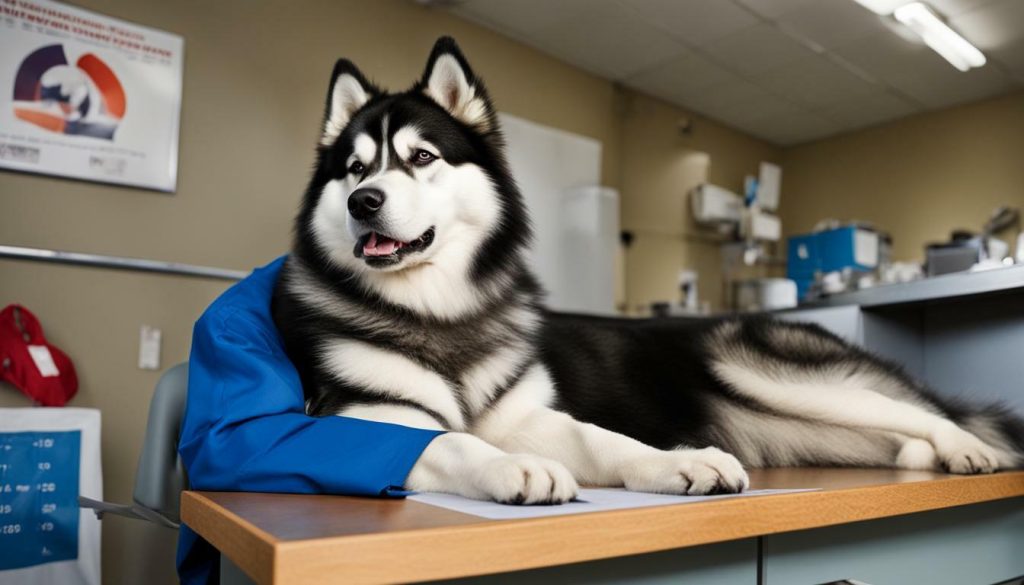
It is crucial to understand that behavioral changes after neutering are usually subtle. Your Alaskan Malamute may become slightly calmer and less focused on mating, but their core personality will remain intact. Proper training and socialization are still necessary for a well-behaved and balanced dog, as neutering is not a substitute for these essential aspects of responsible pet ownership.
Ultimately, the decision to neuter your Alaskan Malamute should be based on factors such as their health, genetics, and specific circumstances. Consulting with a veterinarian who understands the breed and your individual dog’s needs is vital in making an informed decision. They can provide personalized advice and guidance tailored to your dog’s unique situation.
Expert Insight: The Importance of Training
“Neutering an Alaskan Malamute can be beneficial in managing certain behaviors, but it should never be seen as a sole solution. Training is key in shaping a dog’s behavior and ensuring they are well-adjusted and obedient. Neutering should go hand in hand with consistent training methods and positive reinforcement to achieve the desired results.” – Dr. Sarah Thompson, DVM
| Myth | Reality |
|---|---|
| Neutering will completely change my dog’s behavior. | Neutering may have some impact on behavior, but it is not a guarantee of significant changes. Each dog is unique, and behavior is influenced by a variety of factors. |
| Neutering will make my dog more aggressive. | Neutering can reduce hormone-related aggression and frustration, but it will not change inherent personality traits. Proper training and socialization are still necessary. |
| Neutering will solve all behavioral issues. | Neutering can help manage certain tendencies, but it is not a cure-all for behavioral problems. Training and socialization are crucial for a well-behaved dog. |
Consultation with a Veterinarian for Neutering Decisions
Making informed decisions about neutering your Alaskan Malamute requires professional guidance from a trusted veterinarian who can consider your pet’s health and individual needs. Neutering is a routine surgical procedure that involves the removal of the ovaries, fallopian tubes, and womb in female Malamutes, and the removal of the testicles in male Malamutes. While spaying is a more complex procedure than castration, both surgeries are safe and commonly performed.
Neutering your Alaskan Malamute offers numerous benefits. It helps prevent overpopulation by reducing the chances of unwanted pregnancies and the subsequent risk of strays. Neutering also plays a crucial role in reducing the risk of certain cancers in both male and female Malamutes. Additionally, it eliminates the health risks associated with pregnancy, such as pyometra (a potentially life-threatening womb infection) and the complications of giving birth.
However, there is conflicting research about the optimal timing for neutering Alaskan Malamutes. While early-age neutering is common, some studies suggest waiting until after the dog has reached puberty for better long-term health outcomes. This is where the expertise of a veterinarian becomes invaluable. They can assess your Alaskan Malamute’s individual health, behavior, and breed-specific factors to help determine the best time for the procedure.
Consultation is Key
During a consultation with a veterinarian, you can discuss the pros and cons of neutering, as well as any concerns you may have. They will provide you with personalized advice based on your specific circumstances, taking into account your Alaskan Malamute’s age, breed, and overall health. They can also address any questions or misconceptions you may have about behavioral changes that could occur after the procedure.
Remember, responsible pet ownership includes considering the welfare and health of your Alaskan Malamute. By consulting with a trusted veterinarian, you can make an informed decision regarding the optimal timing for neutering that aligns with your pet’s well-being.
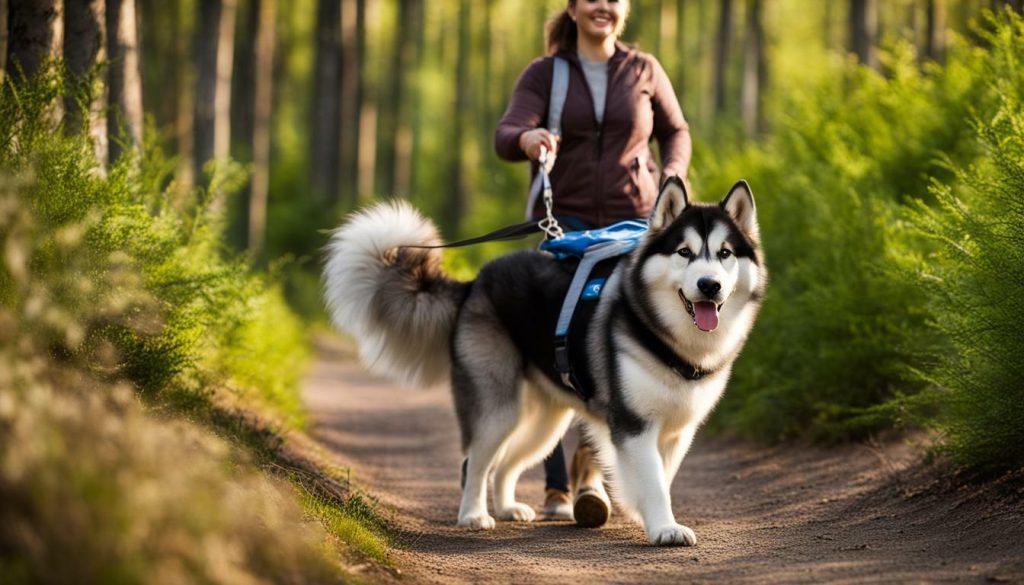
Conflicting Research on the Optimal Timing for Neutering
The topic of the optimal timing for neutering Alaskan Malamutes is still subject to debate, with varying research findings and opinions among experts in the field. Some studies suggest that it is beneficial to wait until the dog has reached puberty before considering the procedure, while others argue for early neutering. This conflicting research can make it challenging for dog owners to make an informed decision.
One viewpoint is that early neutering, typically between six months and one year old, is advantageous. Proponents argue that early neutering can help prevent certain health issues, such as mammary tumors and uterine infections in females, as well as testicular and prostate problems in males. They also claim that early neutering can reduce aggressive behavior, territorial marking, and wandering tendencies, making for a more well-behaved and manageable pet.
On the other hand, some research suggests that waiting until after the dog has reached puberty, usually between 12 to 24 months, may be preferable. This approach allows the dog’s body to fully develop hormonally, potentially reducing the risk of orthopedic issues, such as hip dysplasia. Additionally, waiting until after puberty may promote healthier cognitive and behavioral development, as well as preserve the dog’s natural growth patterns.
Ultimately, the decision on when to neuter your Alaskan Malamute should be made in consultation with a veterinarian who can provide personalized advice based on your dog’s specific needs and health considerations. They can help weigh the risks and benefits of early versus late neutering and guide you towards an optimal decision for your beloved pet.
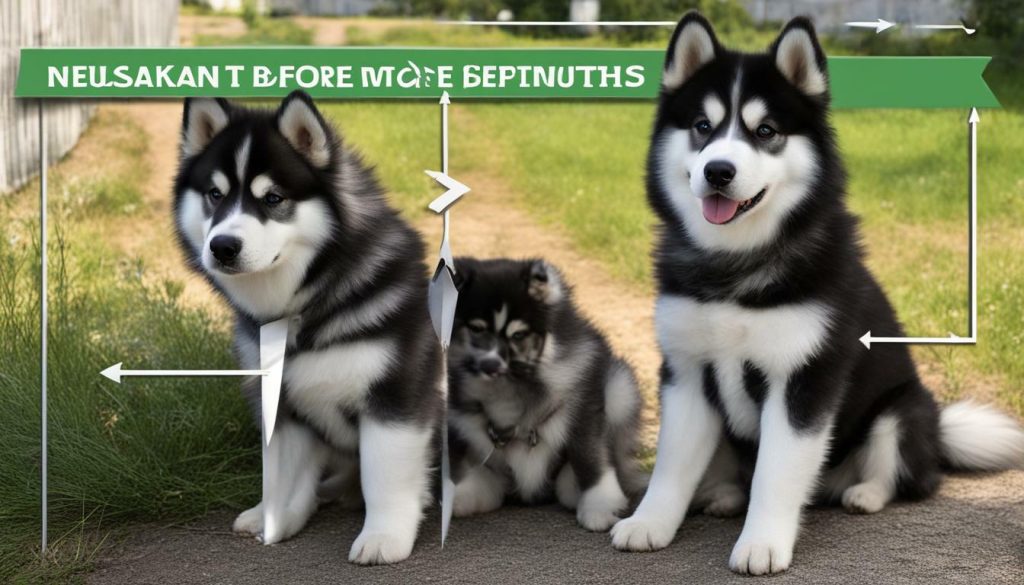
While neutering is generally recommended for Alaskan Malamutes, there are exceptional cases where trusted and accredited breeders may choose not to perform the procedure to preserve the breed’s characteristics.
Factual data supports the view that neutering an Alaskan Malamute between six months and two years of age is the recommended timeframe. This usually involves the removal of the ovaries, fallopian tubes, and womb in females, and the removal of the testicles in males. The surgeries, known as spaying and castration, respectively, are considered safe and common procedures.
Neutering an Alaskan Malamute offers several benefits, including preventing overpopulation, reducing the risk of certain cancers, and eliminating the risk of pregnancy and associated health issues. However, conflicting research exists regarding the optimal timing for neutering. Some argue for waiting until after the dog has reached puberty, while others advocate for earlier neutering. Ultimately, it is essential to consult with a veterinarian to make an informed decision.
It is important to note that trusted and accredited breeders may have valid reasons for not neutering their Alaskan Malamutes. These breeders are dedicated to preserving the breed’s characteristics and may choose not to neuter specific dogs to maintain certain traits or participate in breeding programs. If you are considering obtaining a Malamute from a trusted and accredited breeder, it is crucial to discuss their breeding practices and understand their reasons for not neutering certain dogs.
FAQ
Q: When is the best time to neuter an Alaskan Malamute?
A: Neutering an Alaskan Malamute should generally take place between the ages of six months and two years old.
Q: What does the neutering process involve for Alaskan Malamutes?
A: Neutering involves the removal of the ovaries, fallopian tubes, and womb in female Malamutes and the removal of the testicles in male Malamutes.
Q: What are the benefits of neutering an Alaskan Malamute?
A: Neutering provides several benefits, including preventing overpopulation, reducing the risk of certain cancers, and eliminating the risk of pregnancy and associated health issues.
Q: Is there a recommended age for neutering Alaskan Malamutes?
A: Neutering an Alaskan Malamute within the age range of six months to two years is generally recommended, but there is conflicting research regarding the optimal timing.
Q: Are there any risks associated with not neutering an Alaskan Malamute?
A: Not neutering an Alaskan Malamute can lead to behavioral issues, increased health risks, and unwanted pregnancies.
Q: How should I care for my Alaskan Malamute after neutering?
A: Proper post-neutering care includes following your veterinarian’s instructions, providing a comfortable recovery space, and monitoring your dog’s behavior and incision site.
Q: Will neutering my Alaskan Malamute cause behavioral changes?
A: Neutering can have some impact on behavior, but the extent varies among individual dogs. It is important to consult your veterinarian for more specific information about your dog.
Q: Should I consult with a veterinarian before deciding on neutering?
A: Yes, it is important to consult with a veterinarian when deciding on the timing for neutering your Alaskan Malamute to ensure it aligns with your dog’s health and development.
Q: Is there conflicting research on the optimal timing for neutering?
A: Yes, there is conflicting research regarding the optimal timing for neutering Alaskan Malamutes, with some suggesting waiting until after the dog has reached puberty.
Q: Are there any exceptions to neutering an Alaskan Malamute?
A: The only reason not to neuter an Alaskan Malamute is if it belongs to a trusted and accredited breeder for the purpose of maintaining the breed standard.
